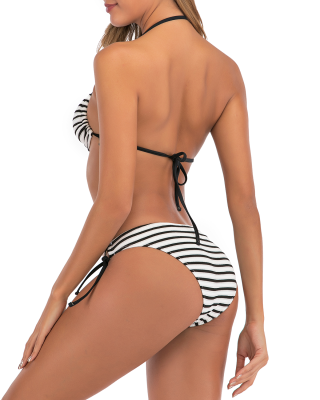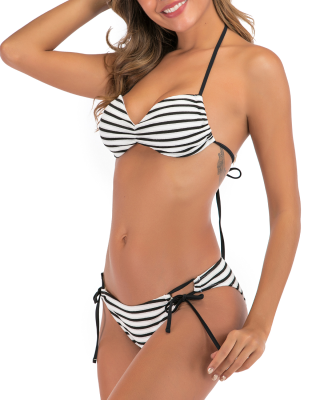Swimwear fabrics are classified into DuPont Lycra, nylon, and polyester are currently the most commonly used materials for swimwear. Any special materials such as hollows, jacquard, etc. cannot be separated from the above three types of elastic characteristics. Many new swimwear fabrics will have special processing such as anti-ultraviolet, anti-chlorine or water splashing.
Swimwear fabric features: DuPont Lycra: is a man-made elastic fiber, the best elastic fabric, can be extended to 4-6 times the original length, excellent stretch, suitable for blending with various fibers, can strengthen the texture drape, anti-wrinkle Etc. DuPont Lycra with anti-chlorine ingredients will enable swimwear to have a longer service life than swimsuits made of ordinary materials. Cotton fabric: Although the texture is not as solid as Lycra fabric, its elasticity and softness are on par with Lycra. It is currently the most commonly used fabric for swimwear and is suitable for mid-priced products. Polyester fabric: It is a unidirectional and two-way stretched elastic fabric. Due to the limited elasticity, it is mostly used in swimming trunks or split swimsuits, not one-piece swimsuits. Fabrics that can be partially spliced or applied with low unit price strategies. Swimwear lining and clothing accessories, the design of swimwear is based on “comfort” and “fitting” as the primary principle. According to investigation and analysis, most of the linings are made of nylon, which is compatible with the elasticity of the fabric, so as not to affect the wearing comfort of consumers. Therefore, when choosing to use clothing accessories, “flexibility” is an absolutely necessary requirement. In response to the trend, if you need to use metal, acrylic, shells and other inelastic accessories, you need to choose a position that does not affect the elasticity of the body. When applied properly, the excipients will have an excellent finishing touch.





















